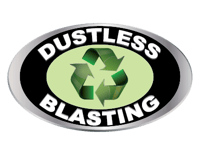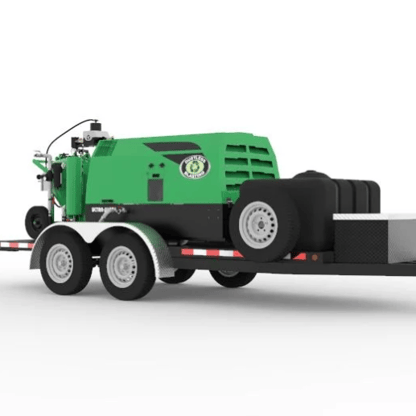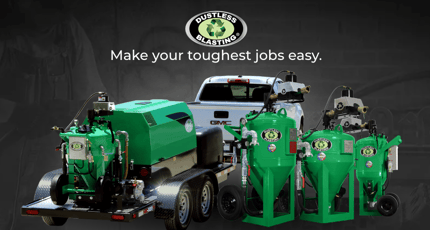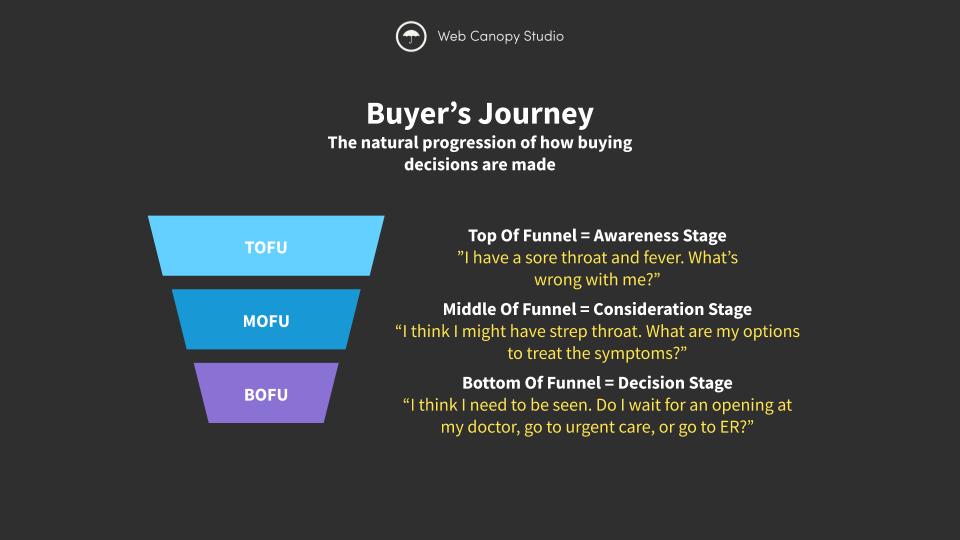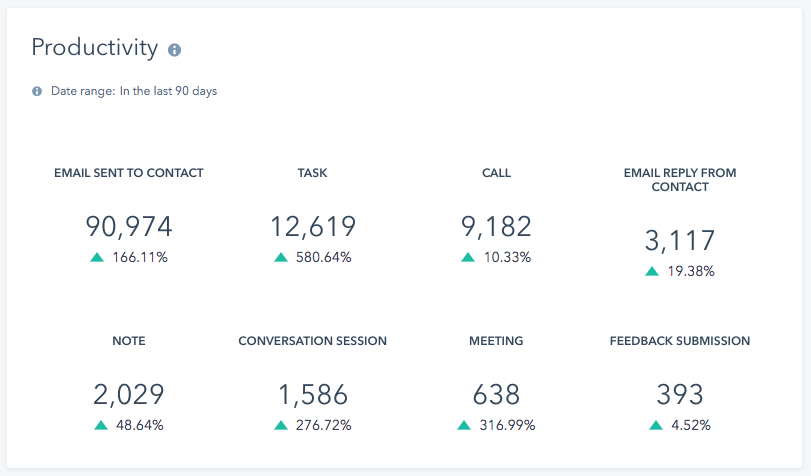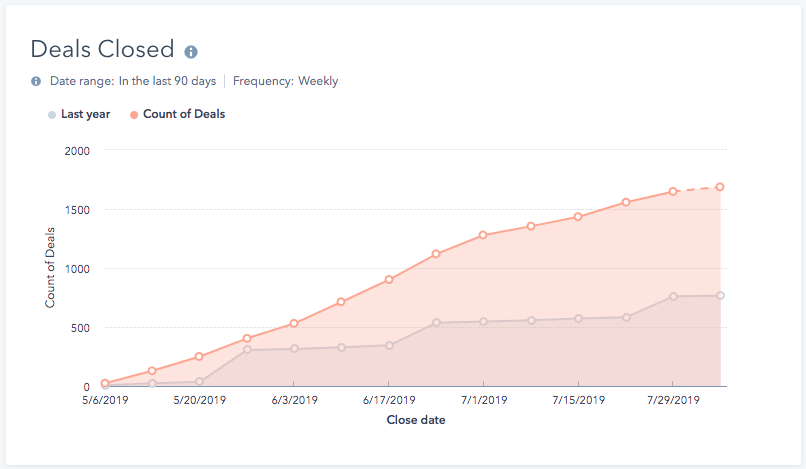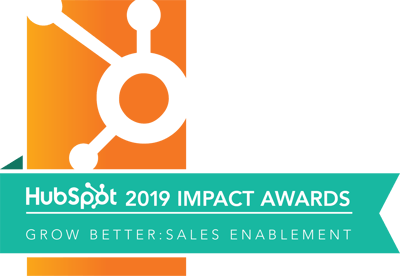1) The DIscovery Process
Before any proper alignment could be done, we had to first deeply understand the current situation in the business. This included:
Sales, Marketing, and Customer Interviews
We needed to get the big picture, so in addition to talking to their marketing team, we spoke with several of their Sales reps and recent customers in order to understand the company and how it's perceived both internally and externally.
By doing that, we were able to better understand their growth challenges, identify some key pain points in their sales process, and build some next steps to get everyone on their team on the same page.
Content Analysis, CRM Audit
We performed an audit of their sales collateral that was currently being used by their team and took a deep dive into their HubSpot portal. Our goal in this project as a whole was to streamline their process from start to finish. This meant being careful not to add any more steps or tasks than needed, or we knew that we'd never get buy-in from their Sales team.
In doing so, we identified several opportunities to create automation that would make their lives easier so they could focus on closing deals and not clerical work.
2) The SLA
We established a Marketing and Sales Service Level Agreement (SLA) with their marketing and sales teams to help them understand exactly what marketing would be responsible for, and what sales would be responsible for in return. This consisted of:
Buyer Personas
It's critical in the selling process to know exactly to whom you're selling. Dustless Blasting was using many different buyer personas in HubSpot, but quickly became clear that all of their leads could be bucketed into two groups: Existing Business and Start Up Business. The Existing Business people were middle managers at existing construction or marine companies who were looking for a new solution they could offer to their customers. The Start Up Business folks were people who wanted to launch their own business with Dustless Blasting's turnkey business package.
We built out clear profiles for each of these personas, including their challenges, pain points, decision-making process, where they go for information, and much more.
Defined Lifecycle Stages
We worked together as a team to truly define terms like Lead vs. MQL VS SQL, etc.. The key point here is that we came at it with a flexible approach - we used HubSpots definitions as a starting point but we mapped them out specifically to Dustless Blasting's process so it made sense for their team.

Outlined Goals
Once we had established Dustless Blasting's revenue goals, we figured out exactly how many Leads, MQLs, SQLs, Opportunities, and Customers they'd need in order to hit those goals. This gave us a full spectrum of visibility of how many contacts progress from one lifecycle stage to the next. It also give us visibility into where there might be roadblocks in the sales process. Instead of wondering where people are in the buyer's journey and how the sales model is progressing, we can now see exactly where in the process people might be dropping off and address it accordingly.
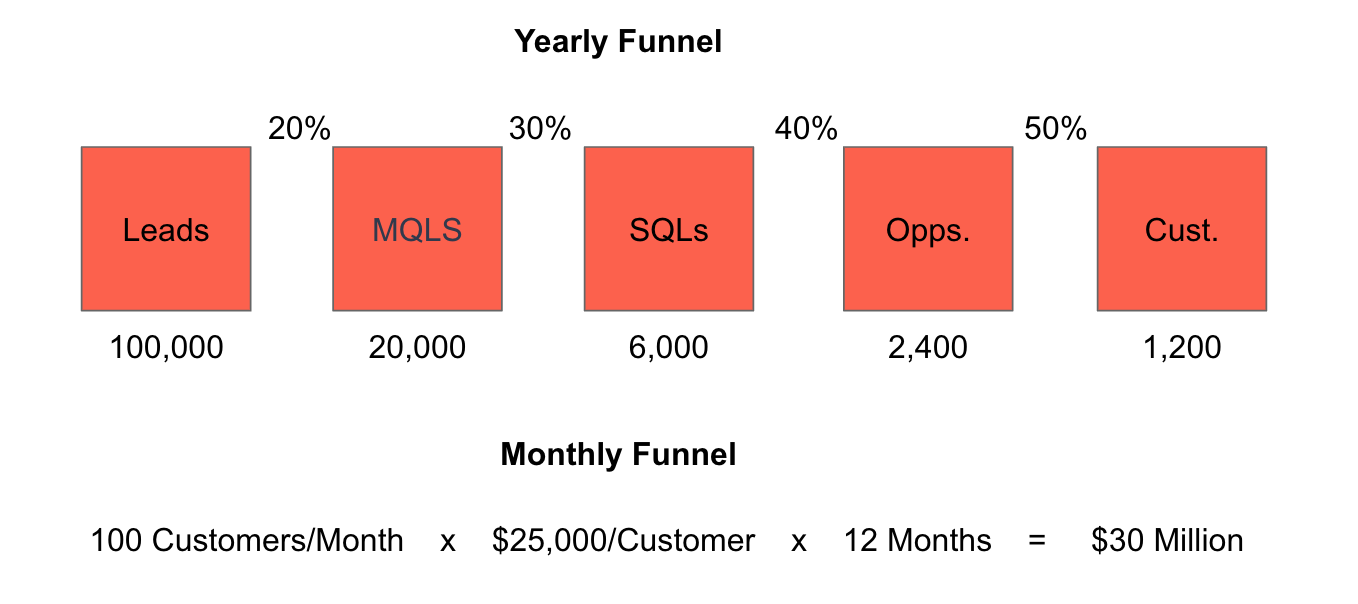
Mapped Sales process
Sometimes there's no more effective way to map out a complicated process with lots of moving pieces than with a simple flow chart.
So that's what we built.
We worked with the Dustless Blasting team to build our a detailed document that outline the entire sales process. The entire buying journey, from Marketing/Sales Handoff to becoming a customer was marked on a clean, color-coded flow chart. This way, everyone on the team knew exactly what was expected of them, where contacts lived in the sales cycle, and how each step in the process associated with deal stages and lifecycle stages. When we presented the final version to the Sales team, we broke it down section-by-section with screenshots and detailed instructions on exactly what steps needed to be taken all along the way.
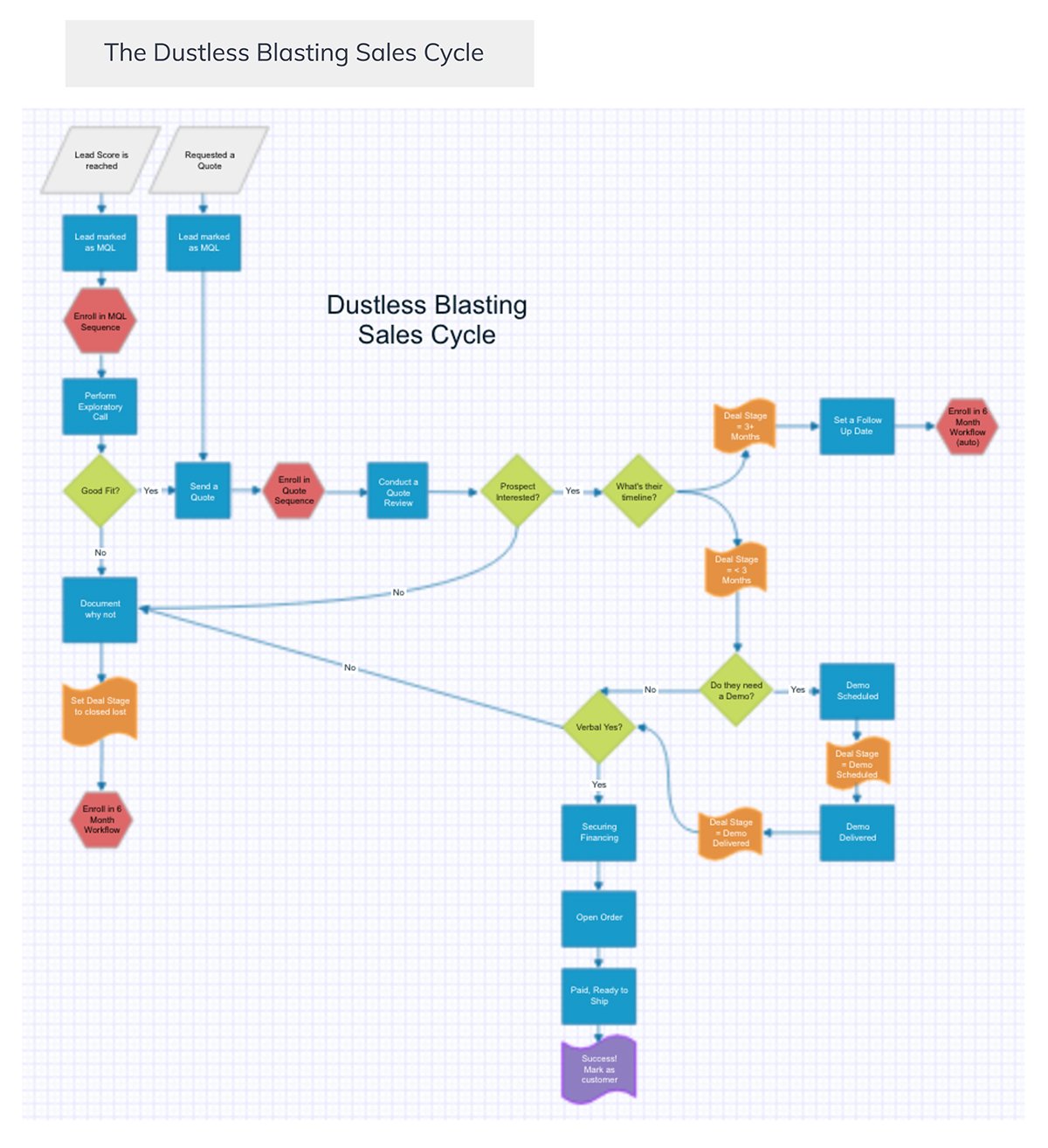
Smarketing Outline
We built an agenda outline for Dustless Blasting's smarketing meetings to encourage transparency, accountability, and progress. This included discussing current deals that were on the table and what was needed in order to close them, why some leads aren't deemed appropriate and what steps may be needed to fix that, what collateral Sales could use from Marketing, and more.
3) The Sales Playbook
After mapping the sales process, we needed to document the sequences, workflows, and scripts for individual stages:
Lead nurturing workflow
Once we had established what a good lead nurturing workflow looks like, we needed to find a way to bring the best leads to the front. For that, we used Lead Scoring.
Using HubSpot's Lead Scoring contact property, we were able to actively score for both high fit (job title, revenue, location, etc.) and high engagement (site visits, viewing high intent pages, clicking marketing emails) and set a number at which we were ready to call that person a Marketing Qualified Lead. Once a contact reached that score, we created an MQL workflow to update their lifecycle stage and assign them to a marketing rep. We also create a task for the salesperson to begin an MQL sequence and immediately reach out to the prospect.
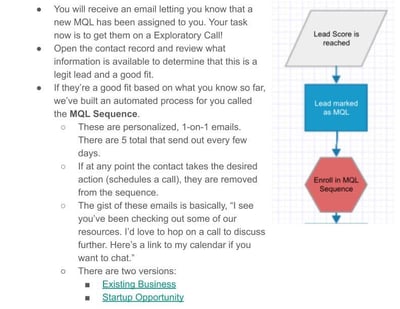
MQL Sequence
When that contact becomes an MQL and they're handed off to sales, we used HubSpot's sequence tool to built automated sales sequences that their reps could use to get them on an exploratory call. This involved setting up a cadence of email and phone calls and setting up separate sequences for their two different buyer personas, each with specific language that's targeted to that persona. The goal of these sequences is to set up an exploratory call.
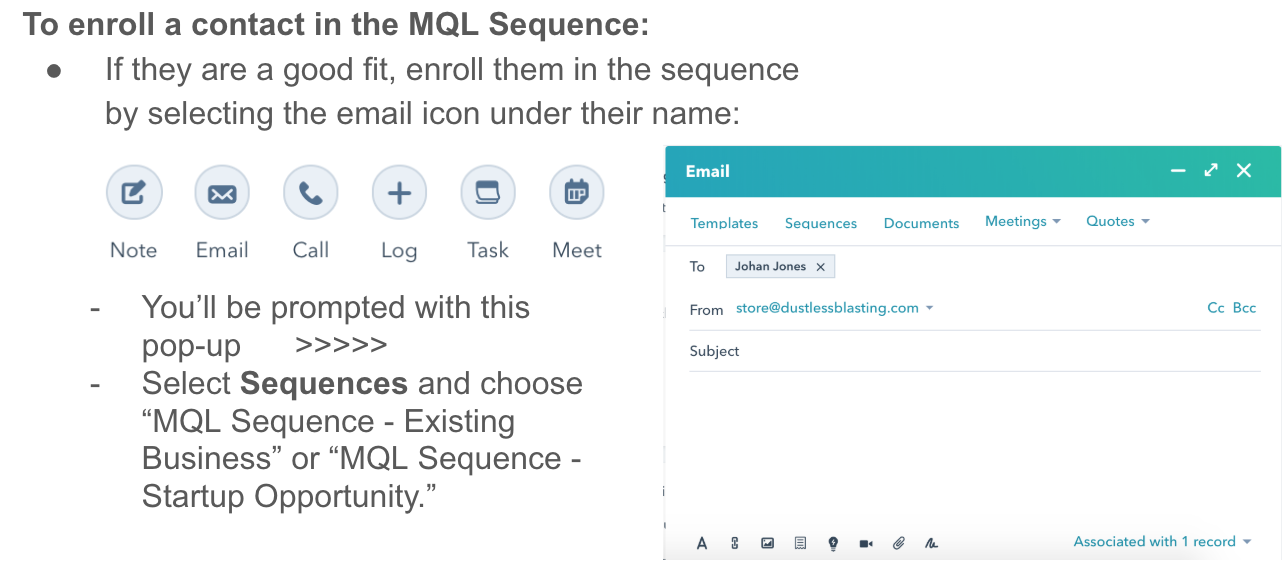
Exploratory Playbook
We identified the key information that was necessary to collect from the lead during an exploratory call phase. This gave us what we needed to create a checklist of questions for the sales team work against as they conducted each and every exploratory call. This was a critical step for making sure all the sales team was performing on the same tasks in the same way. This also created really good accountability; for example, there was no reason not to collect information about the lead's timeline to buy on the exploratory call because that information was on the checklist.
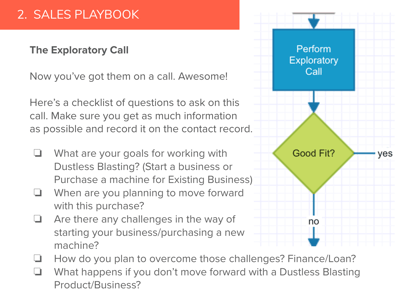
Throughout the playbook, we made notes for training and teaching. We also helped give visual cues on where to find tools and items inside HubSpot.

Sales return to marketing
What happens when a lead is marked as not a good fit? This could be for any number of reasons - they don't have budget, their timeline is way off, or they're simply not interested. When that's the case, we still want to keep them in our nurturing process, just in case circumstances change. We set up a workflow that's contingent on the sales team changing a contact property, which automatically pushes that contact back to marketing so they can continue to be nurtured until they're ready to have a sales conversation.
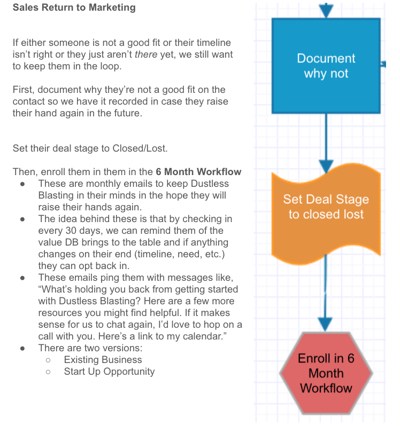
The Quote Process
There was no clear process established for after a quote was provided to an MQL, so we build another set of sequences for the Quote Review (again, setting up one for each buyer persona). This involved sending emails and asking what they thought of the quote, sending more information that might be helpful to their decision-making process, and asking if they're ready to move on to the next step.
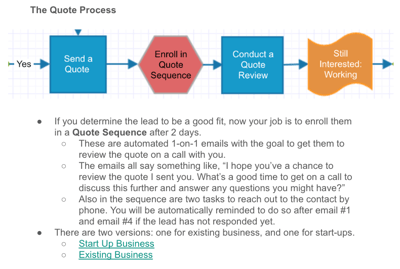
The Path To Success
The 3 pillars to success for Dustless Blasting:

